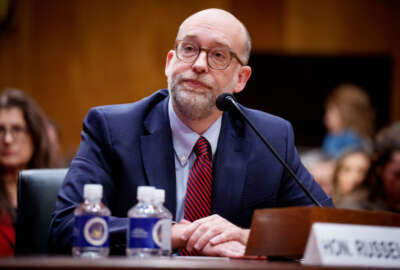Introduction: New Face of Government
People in their 20s and 30s - often called Generation X\'ers, Y\'ers and Millenials - are sparking a cultural transformation in the federal workplace. The series...
wfedstaff | June 4, 2015 9:06 am
(This story is part of a Federal News Radio special report, “The New Face of Government.”)
By Jolie Lee
Federal News Radio
People in their 20s and 30s – often called Generation X’ers, Y’ers and Millenials – are sparking a cultural transformation in the federal workplace.
Earlier this year, Federal News Radio explored the ways that government can recruit the best and brightest as part of the special series “The Need for the Next Generation.”
In this series, Federal News Radio explores the relationship between cross-generational coworkers. We share perceptions long-time employees and younger coworkers have of each other. And we get some straight answers from young feds about what they love, hate and would change about government.
Who is part of the next generation?
Generally, Federal News Radio defines young feds as employees in their 20s and 30s. They are part of the Gen X’ers (born between 1965-1980) and Millenials, also known as Gen Y’ers (born after 1981).
The characterizations of these generations are broad and based on trends hiring managers and researchers have noted.
The younger generations are entering a federal workforce that skews heavily toward employees who have been on the job for decades. According to a 2010 Deloitte study, 8 percent of the federal workforce in 2009 was under the age of 30, compared with a quarter of employees in the private sector. (As of December 2010, nearly 11 percent of the federal workforce was under the age of 30.)
On the other end of the age spectrum, 43 percent of the federal workforce was age 50 and over, compared with 26 percent in the private sector.
Shifting recruitment, work culture
Agencies have been bracing for a so-called retirement tsunami, and the federal government has adjusted its recruitment processes to make the application more user-friendly, particularly for young people.
For example, the Office of Personnel Management has called on agencies to eliminate KSA (Knowledge, Skills and Abilities) essays and rely on a more resume-based evaluation.
Agencies must also recognize the younger generations are digital natives; they grew up using technology and the Internet. The newer generations are used to having information delivered to them and need to be recruited more actively.
Agencies must have a presence on college campuses and reach out to graduates through social media and have user-friendly websites, said Rob Shriver, special counsel to the hiring team at OPM.
“We need to be reaching out and communicating with them in the ways they’re used to communicating,” Shriver said.
The new generations’ needs are also translating into changes in how federal managers view employees. Ultimately, these changes are going to redefine the federal work culture, said Bonni Yordi, director of surveys and business research at the Management Association and co-author of a study on the federal multi-generational workforce.
“The problem is right now we’re in transition. We’re neither here nor there,” Yordi said.
She added, “But I do believe in a few years we’ll look back and say, ‘Ah, our work culture has changed.’ It’s moved from a hierarchical, top-down workplace into a much more fluid, flexible workplace where we use technology to communicate with anyone, anywhere, anytime and it’s a much more positive workplace.”
Check out more from the Federal News Radio special report, “The New Face of Government.”
Part 1 – Introduction: New Face of Government
Part 2 – Survey reveals both opportunities, rift between generations
Part 3 – Practical tips for engaging young feds
Part 4 – Young feds share what they really think (Read the profiles of six young feds)
Copyright © 2025 Federal News Network. All rights reserved. This website is not intended for users located within the European Economic Area.





